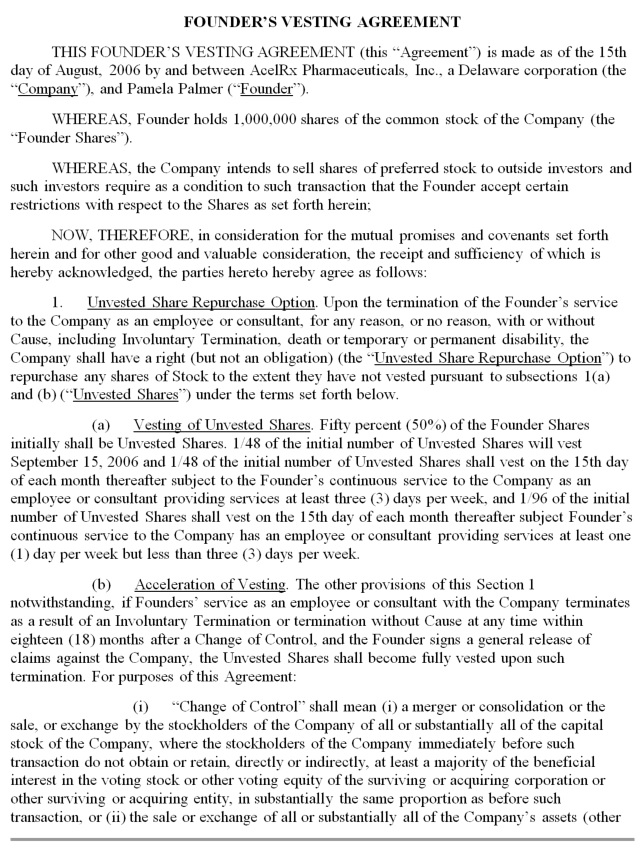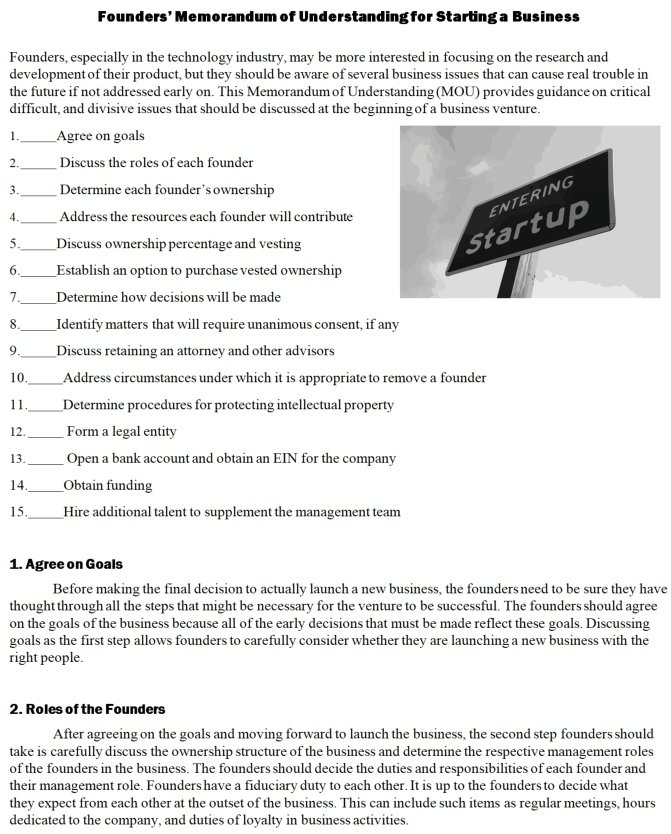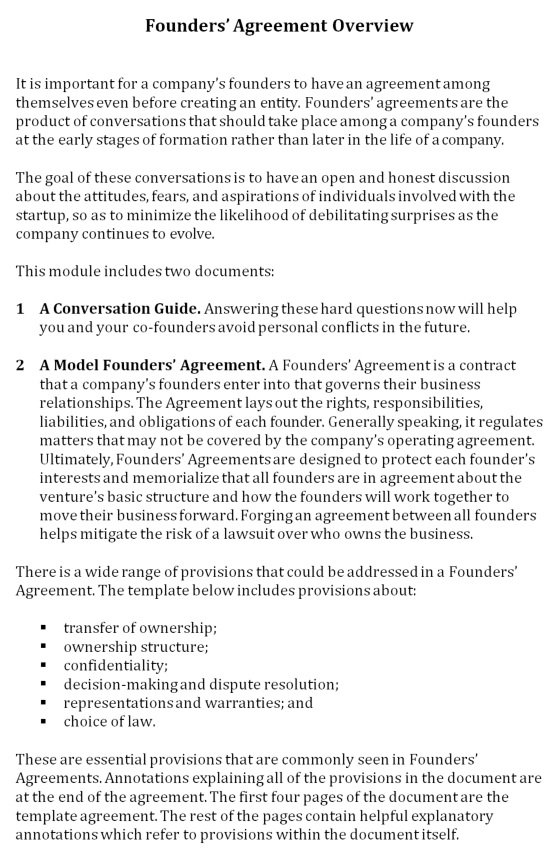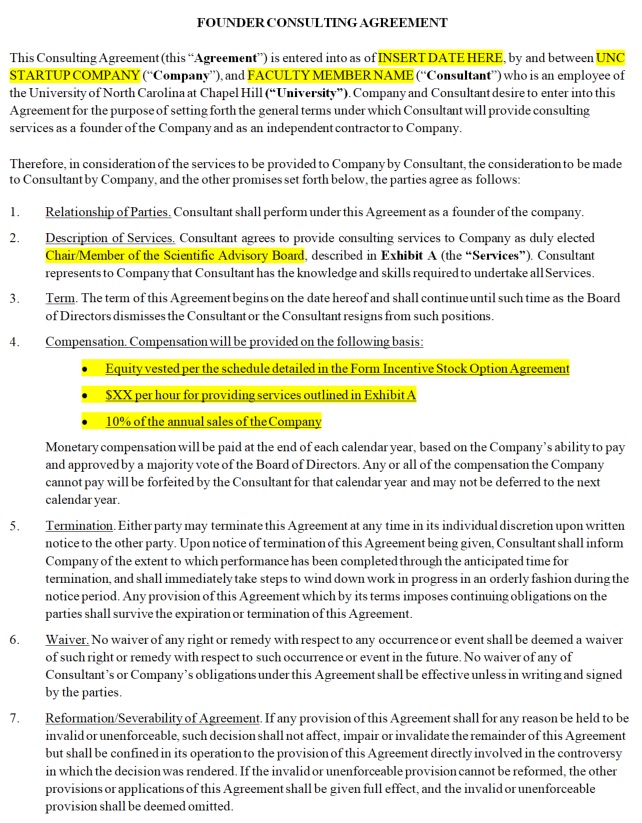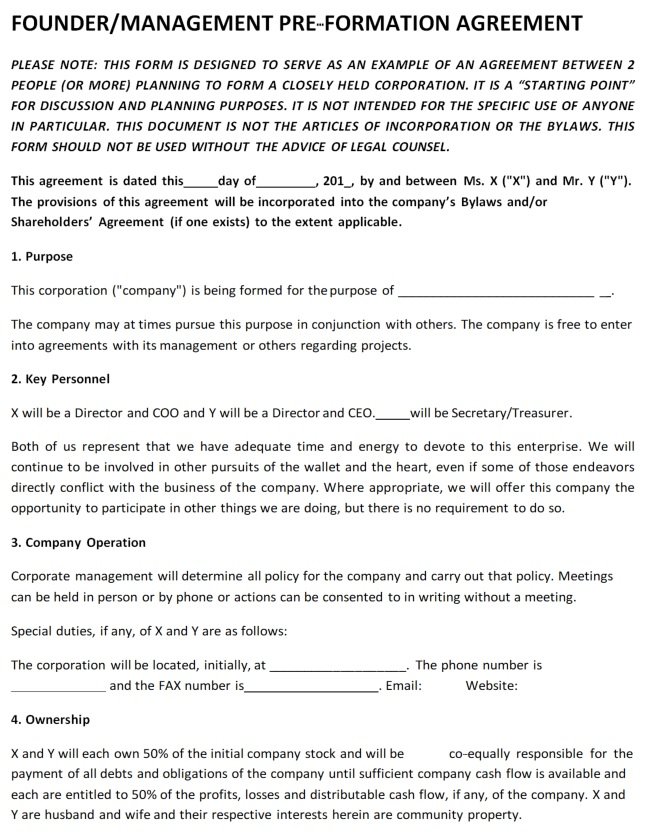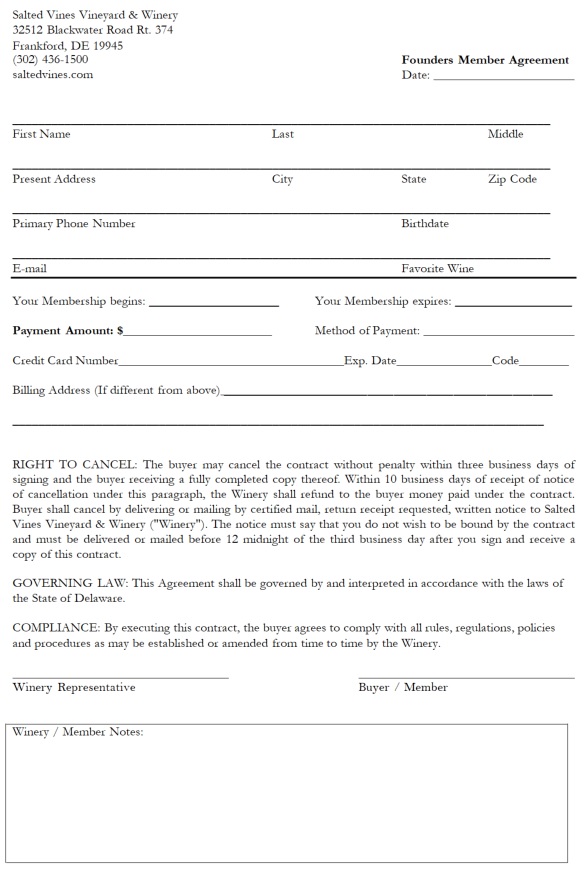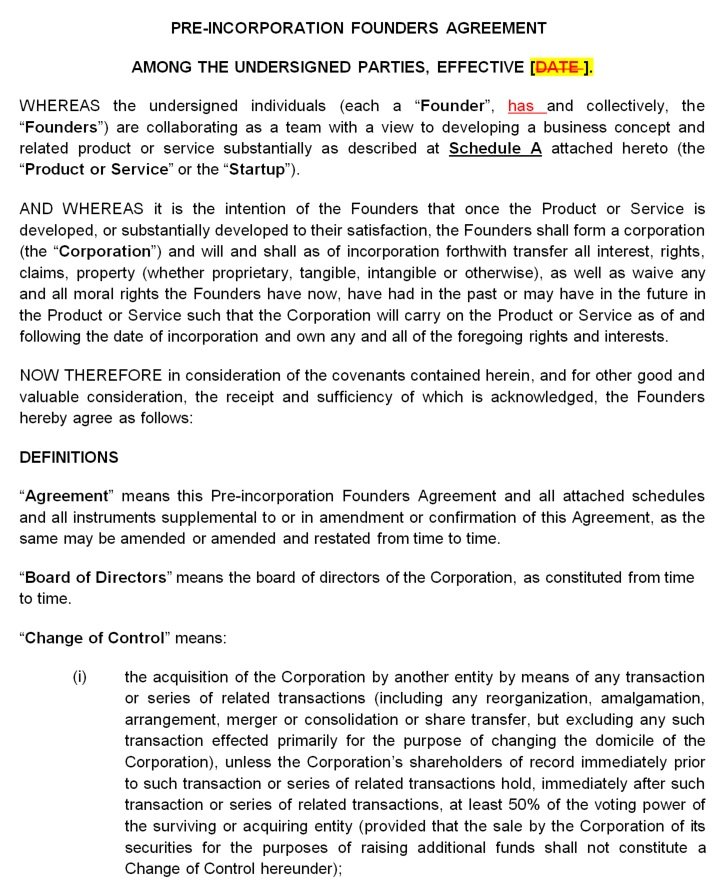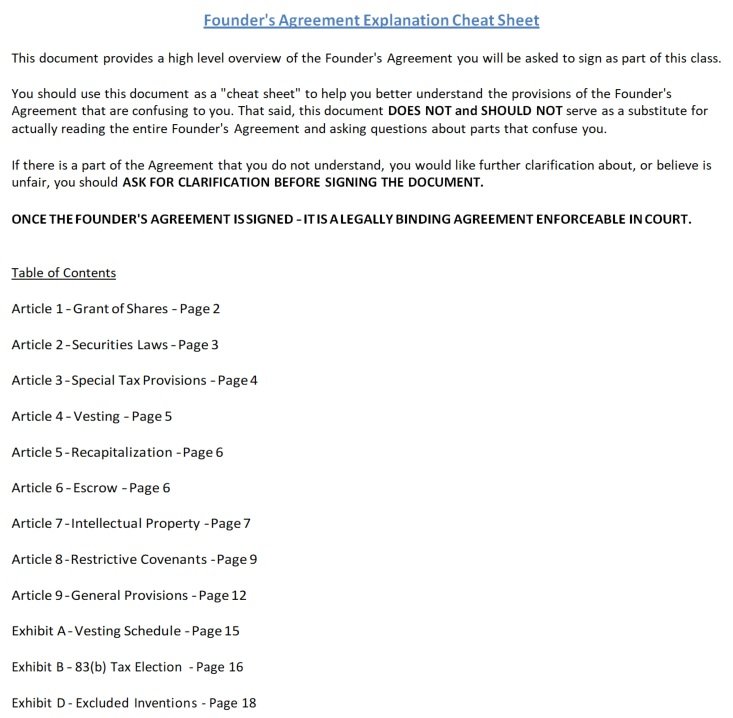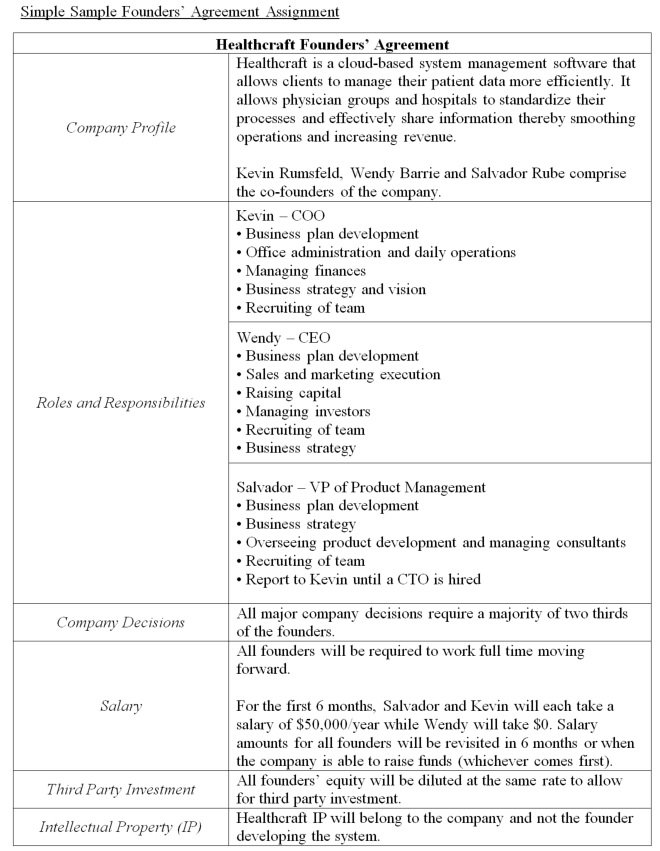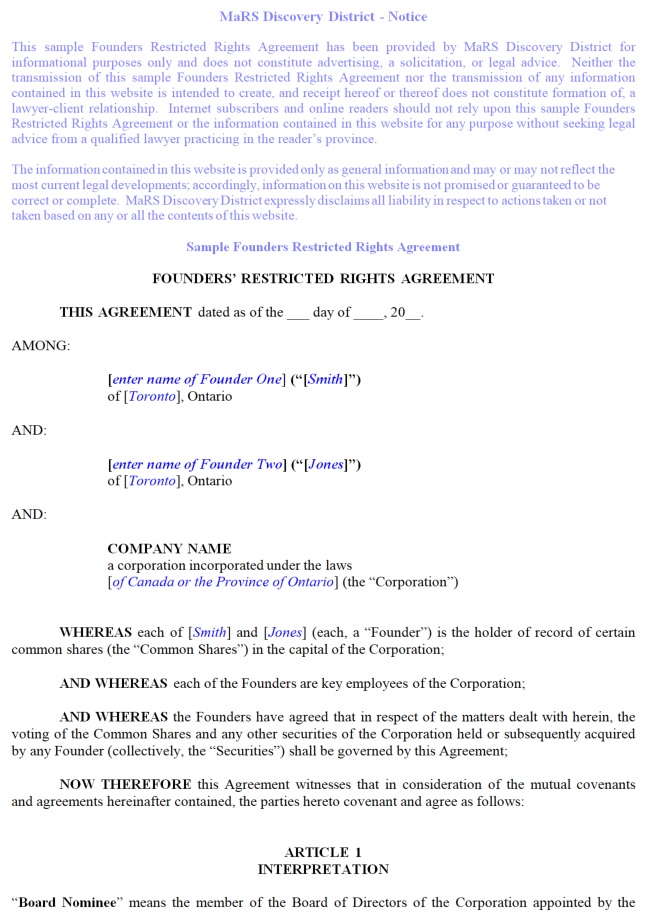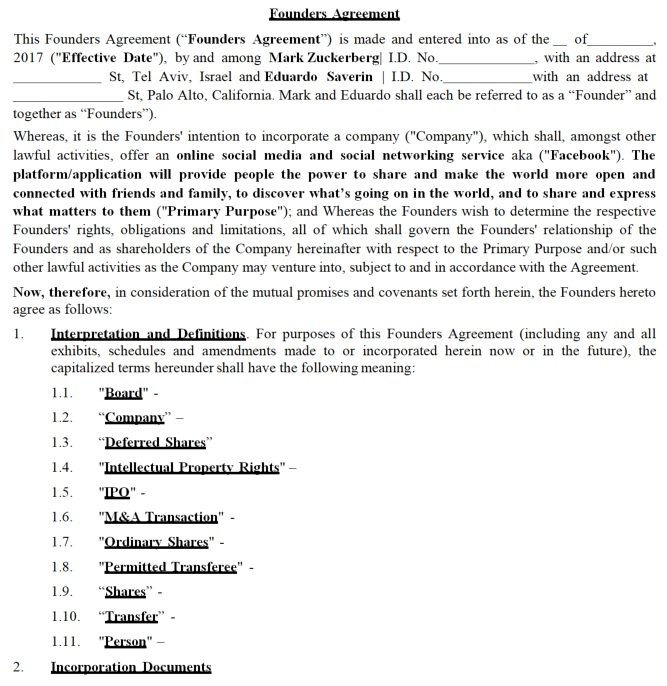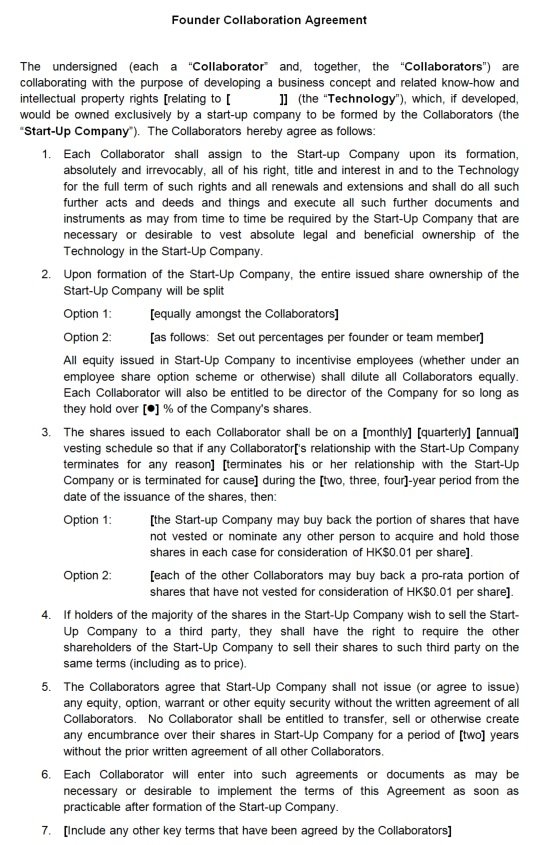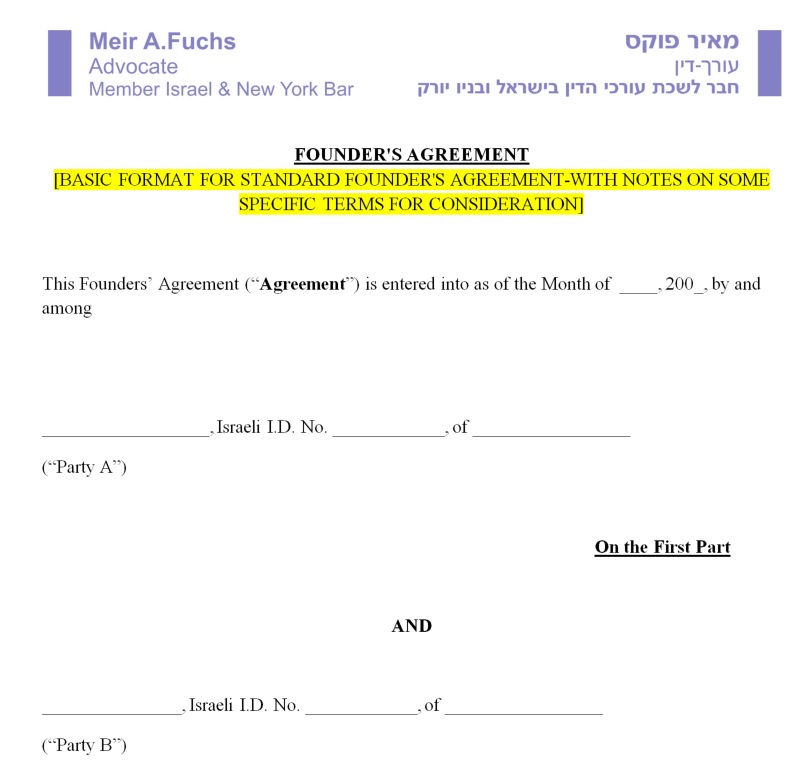The founders of a company need a founders’ agreement template when they are launching a small company with several friends. It contains information about the roles and responsibilities of founders and co-founders. This document is also known as a shareholder’s agreement.
Table of Contents
- 1 What is a founders’ agreement?
- 2 When should you use a founders’ agreement?
- 3 What to include in a founders’ agreement?
- 4 The 3 most important components of a founders’ agreement:
- 5 What to consider before creating a founder’s agreement?
- 6 How to create a founders’ agreement?
- 7 Faqs (Frequently Asked Questions)
What is a founders’ agreement?
A founders’ agreement is a legally binding contract created by a company’s founders to specify the liabilities, responsibilities, and roles of individual partners. The agreement is used to set guidelines for their business relationships.
Furthermore, all business owners must sign the founders’ agreement to make sure that they agree to and will abide by critical financial, legal, and contractual issues.
When should you use a founders’ agreement?
Drafting a founders’ agreement is an excellent first step to take if you’re planning to start a small company or a big one. This document helps you to include information about the company, the decision-making processes and authorities, and more. It isn’t necessary to file your agreement with your local or state government. The thing that matters is to draft this document and keep it along with the other important documents of your company.
You should use the founders’ agreement in the following situations;
- For your new company or business, if you need to clarify the distribution of ownership.
- If you want to build a healthy relationship among the co-founders of the company or business.
However, you can draft the agreement after finalizing the details of your business as this document isn’t a legal requirement for businesses.
What to include in a founders’ agreement?
A founders’ agreement should include the following details;
- Interpretation of terms related to start-ups
- Incorporation and transfer of ownership
- Titles and responsibilities
- Time commitment of each founder either full-time, part-time, or hours per day
- Specify which partner is the primary and secondary decision maker
- Initial capital contribution
- Ownership and business structure
- Vesting schedule
- Dispute resolution procedures
The 3 most important components of a founders’ agreement:
Here are the 3 most essential components of a founder’s agreement;
Roles and responsibilities
Each partner must have a clear understanding of their own roles and responsibilities from the very first day. To create a shared and open culture for your company, specify your roles and responsibilities even if you are starting a small company with your closest friends.
Equity ownership and vesting
This component of a founders’ agreement is quite subjective as you have to distribute the ownership of your company between all the co-founders. Arrange a meeting with your co-founders while deciding this part of the agreement so that there won’t be any miscommunications that may destroy your professional relationship.
In addition, specify in the agreement the exact percentages of shares owned by each co-founder. To make everything official and clear, include the specific percentages in the document. Also, for all the equity of the founders, consider the terms for market vesting. Vesting terms usually occur quarterly or monthly over a specific period.
IP assignment
Along with developing a business plan, a platform, or a product, all of the co-founders of the company are also creating their own intellectual property or IP. You just have to ensure that the IP you develop for the company is related to your company not to the people who created the IP.
What to consider before creating a founder’s agreement?
A founders’ agreement prevents miscommunications that may come up in the future. So, you must create this agreement.
Any potential complications and risks are determined by the founder’s agreement with the vesting. You must discuss with your co-founders to finalize the most important issues before drafting the agreement. These may include management, ownership, compensation, the board of directors, and more.
With the help of a founder’s agreement, you can prevent situations that become a hurdle in the growth and development of the company. That’s why, scrutinize all of the statements and details while making the agreement. You should also ensure that everyone agrees with what is included in the agreement.
How to create a founders’ agreement?
Consider the following tips to create a meaningful agreement;
Think logically
It isn’t a requirement to create a founders agreement but it proves extremely useful if you think logically while creating this agreement. In order to create a better understanding among all of the co-founders, think logically together with them while drafting the document. Additionally, involve the following when you are creating it;
- The ability to envision one venture
- Share your ambitions and passions
- Negotiations
- For different issues, consider different types of business cases
- Make projections
- Learn from your past experiences
Include the founder DNA
Every founder’s passions, commonalities, differences, and experiences are referred to as their DNA. To determine how well you can work together, compare the overall backgrounds and experiences of all the founders.
When creating your founders’ agreement, you can also consider any voluntary and educational activities. The passion felt by the founders and their desire to achieve their goals affects the founders’ DNA. You should also determine the weaknesses of each of the founders so that you know whether you should provide them with supplementary training to improve those skills.
Take the agreement as a moving baseline
When you treat this agreement as a moving baseline, it provides the document with a deeper meaning. Also, it enables you to reconsider the logic behind this venture. Doing so also allows you to come up with a model that is scalable and innovative. Moreover, treating the agreement as a moving baseline motivates commitment and loyalty in terms of sticking with the business.
Use a founders agreement template
When creating your own founders’ agreement, you can use a template as a reference point. With the help of the template, you can get a better idea of what format to use and what details to include in your agreement. These templates contain standard issues, statements, and clauses. You just have to modify them as per your own situation.
Hence, it is important to have all the founders while drafting this document. This way, you don’t forget any important information and contents of the document.
Decide the working order
The working order usually starts with high-level clarity and the interest and personal ambitions of the founders. Include the vision of your company in the agreement. Have meetings with your co-founders and discuss what you’re trying to achieve and why.
After that, align your personal ambitions with the vision of your company. Come up with business logic, a financial model, a vesting, and a breakdown schedule on the basis of this alignment. Next, fine-tune your operational model.
Deal with compensations
Have a deal with the compensation/salary clauses before wrapping up. Tie the clauses to the collective results as performance measures aren’t very accurate for startups. Then, divide all of the net proceeds in a manner that is agreeable mutually. Also, it is an efficient way to deal with the issue.
Hire a start-up attorney
Hire a start-up attorney before finalizing your document. They look over your document and address the obvious issues that stand out in it. Give them a recent copy of your agreement so that they can formalize its language.
Faqs (Frequently Asked Questions)
Both these agreements concentrate on different informational purposes. A founder’s agreement states the responsibilities and obligations of every co-founder. On the other hand, bylaws identify the inner structure of cooperation.
A founder’s agreement usually consists of 8-16 pages or more and covers almost twenty-thirty issues and responsibilities.

